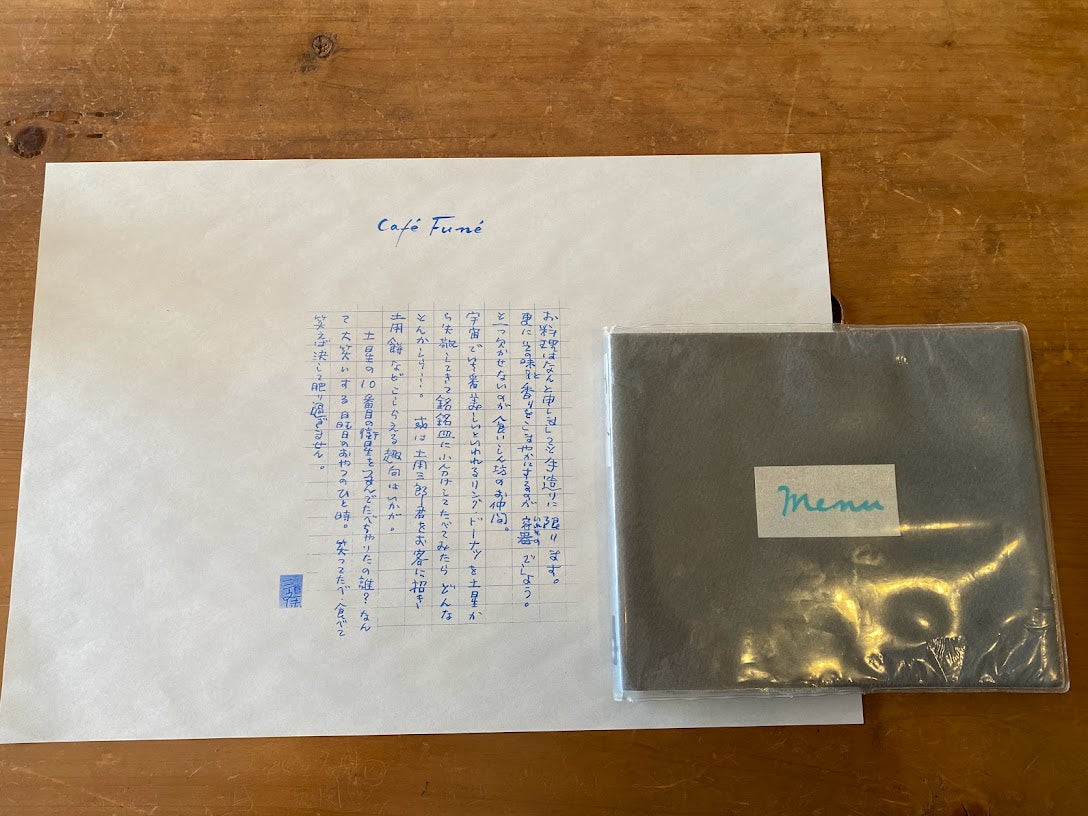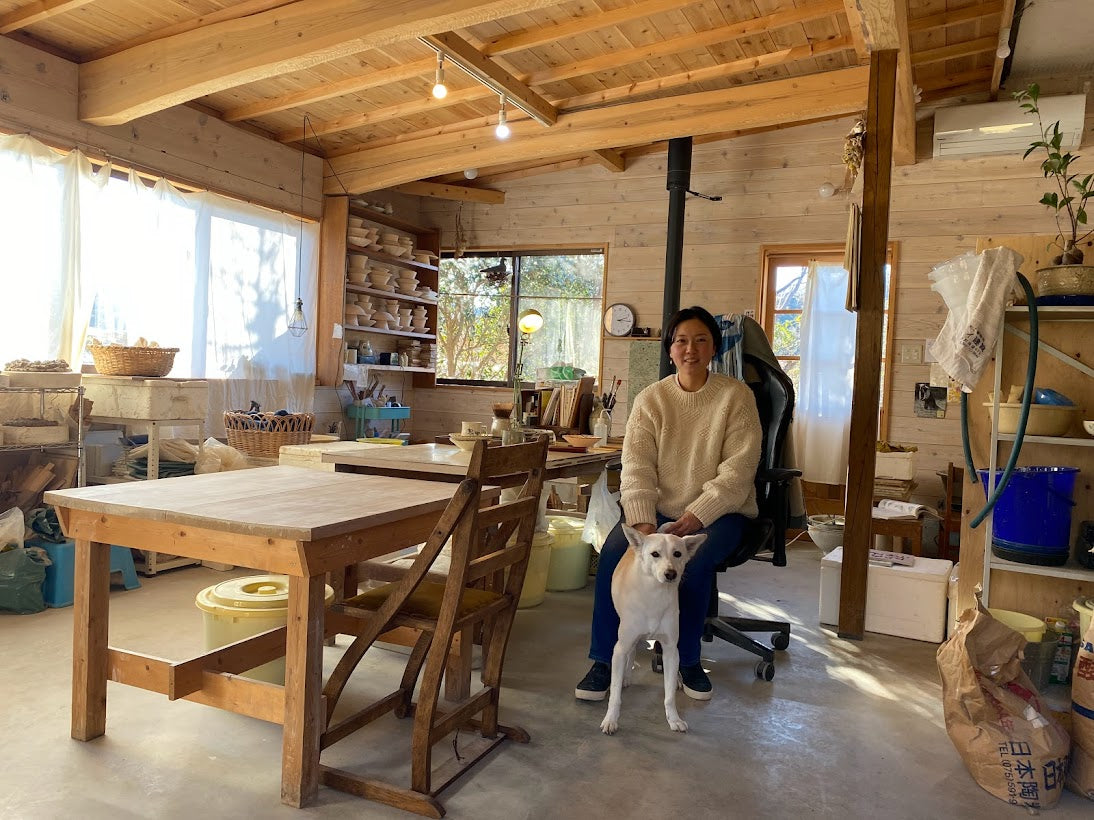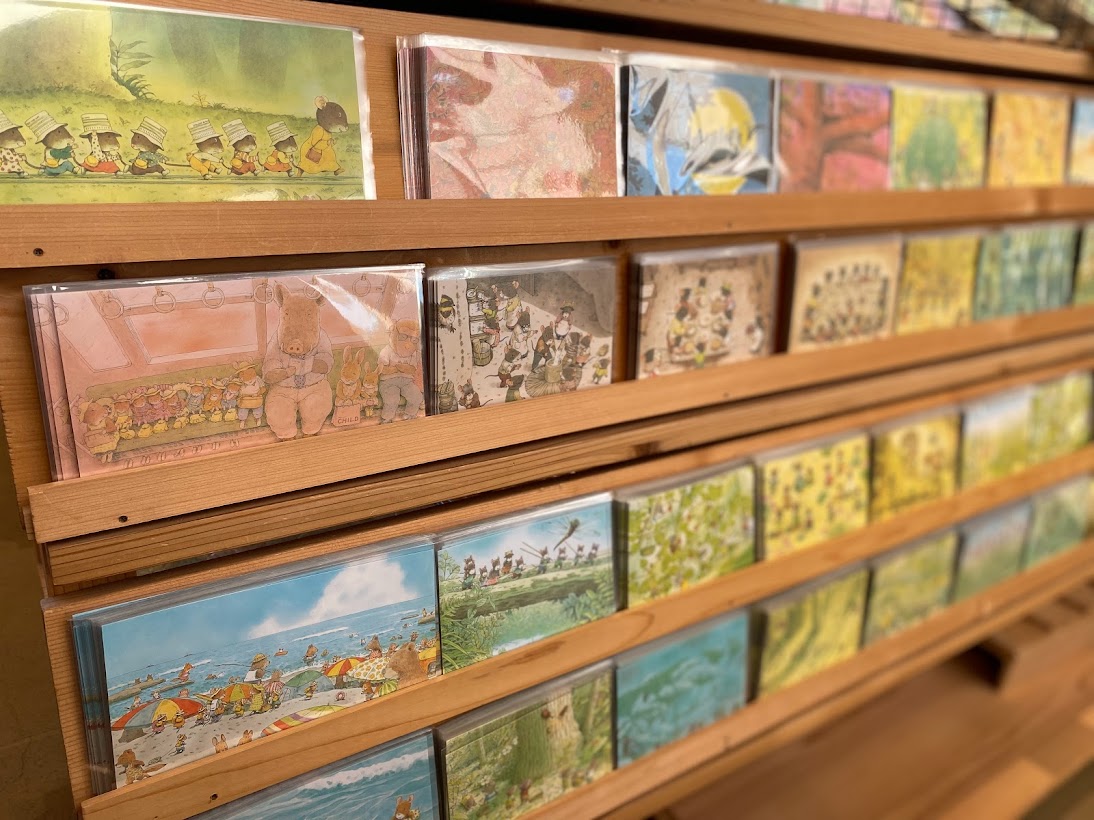Mashiko Town in Tochigi Prefecture is one of the leading ceramic production areas in eastern Japan.
It's interesting just to experience the culture of pottery, but Mashiko Town is dotted with unique cafes, and just looking at the cups and vessels used at each cafe will make you happy.
If you go a little further, there are many hidden cafes, galleries, and power spots.
To Mashiko Town
We planned a day trip where we would arrive in Mashiko Town at 9am and return home around 6:30pm.
| 9:00 | Gather information at the tourist information center at Mashiko Station |
| 10:00 | Visiting the power spot Kameoka Hachimangu Shrine |
| 11:00 | Looking for pottery & visiting cafes on Jonaisaka Street |
| 12:30 | Lunch at Café Fune |
| 14:00 | To Aki Murata's workshop |
| 15:30 | Watching Aki Murata's solo exhibition at Moegi Main Store |
| 17:30 | Souvenir shopping at Mashiko Roadside Station |
We used a car for transportation.
● By car
By Tohoku Expressway: 25 minutes from Kita-Kanto Expressway Moka IC.
By Joban Expressway: 20 minutes from Kita-Kanto Expressway Sakuragawa-Chikusei IC.
● By train
Transfer to the Mito Line at JR Oyama Station and take 26 minutes to Shimodate Station. Transfer to Moka Railway at Shimodate Station and arrive at Mashiko Station in about 25 minutes.
*If using the Tsukuba Express, transfer to the Kanto Railway Joso Line at Moriya Station and take 62 minutes to Shimodate Station.
*There is also an express bus from Akihabara Station to Mashiko Station (operates daily/minimum 2 hours and 30 minutes).
Gather information at the tourist information center at Mashiko Station
This time I visited Mashiko by car, but first I went to Mashiko Station to collect tourist information.

Mashiko Station, with its impressive twin towers and tiled roofs, has an innovative design unique to the gateway to the pottery town.
When I looked into it, it seems that it has been selected as one of the "100 best stations in Kanto".
The picture has an open yet somewhat nostalgic atmosphere.

The purpose of stopping at the station was to gather information at the Mashiko Town Tourism Association.
The Mashiko Town Tourism Association has a face-to-face counter where staff can provide directions, but you can also gather sufficient information at the information corner in the center of the space.

Among the materials I received this time, the one that was particularly useful was a map/guidebook called "Mashiko-san and Mashiko's Cafe."
Recommended cafes for each area are listed on the map, and on the back there is also information such as recommended comments for each shop and whether or not they have SNS, which was very convenient.
Kameoka Hachimangu Shrine, a popular power spot on SNS

While driving along National Route 294, a large red torii gate suddenly appears.
This is the entrance to Kameoka Hachimangu Shrine.
The main shrine is at the end of the long approach path that passes through the torii gate.

A stone statue of a turtle is enshrined halfway up the approach to the shrine.
It is a power spot that has become a hot topic on social media as the "Nade Turtle", and it is said that if you stroke the area where you feel unwell, you will feel relief.
When you touch it, it is very smooth, probably because it has been caressed by many people.

The main shrine was at the top of the long stairs.
It's not a large company, but the clean air cleanses your soul.

There are many stone statues of turtles lined up in the shrine grounds, like guards protecting the main shrine, including the water fountain.
If you have time, it might be interesting to take your time and count how many stone turtle statues there are from the approach to the temple grounds.
Looking for pottery and visiting cafes on Jonaisaka Street

I returned to Mashiko Station from Kameoka Hachimangu Shrine and took a stroll along Jonaisaka Dori, the main street in Mashiko Town.
If you are walking from Mashiko Station for about 15 minutes, if you are driving, you can use the parking lot of "Mashiko Ceramic Art Museum Ceramics Messe Mashiko" located around the back of the hill for free.

Jonaizaka Street is lined with shops that sell tableware selected by discerning shop owners, and some of them display their products not only inside the shop but also outside the shop.
You can also find original works at the shop that has a workshop attached.
It's a fun street just to look around each store carefully.

Jonaizaka Street is also famous for its many cafes.
Many potteries run cafes, where you can take a break while looking at the pottery up close, as if you were in a gallery, and you can also enjoy meals and coffee using the pottery and cups made by the pottery.
Excellent lunch at Café Fune, a house nestled in the forest
There are over 10 cafes along Jonai-zaka Street alone, and over 20 cafes in this area alone, including along Mashiko Reference Museum Street behind it.
You'll get hungry while you're trying to decide which cafe to go to, so it's essential to know what kind of cafe you'd like to spend your time at in advance.
By the way, I had cheated and asked Aki Murata, a ceramic artist who I would be visiting later, for recommendations, so I went to that cafe without hesitation.

A 15-minute drive from Mashiko Station will take you to a peaceful atmosphere dotted with private houses.
Café Fune is inside.
The appearance looks like a private house that has been renovated into a cafe.

For the lunch menu, you can choose from the winter-only "Onfumen" (1,650 yen) and "Fune Plate" (1,650 yen).
After much consideration, I chose the "Fune Plate".
A popular menu where you can enjoy small portions of various dishes.

The first salad I was served was hearty and included shrimp and squid.
The transparent bowl that expresses the freshness of the salad is also wonderful.

The bowl of Chinese cabbage soup made with milk and consommé is as elegant as a matcha bowl.

The main plate is a large bowl with sautéed chicken thighs, hors d'oeuvres, and hot bread (you can also use it as rice).
1,650 yen is quite a bargain for something like a mini-course of French cuisine.
Lunch time was a luxurious time that was pleasing to the eye.
Go to Aki Murata's workshop where you can see the original scenery of Mashiko Town

I visited Aki Murata's workshop, which is located a little further from Jonaisaka Street.
What greeted us was a plump cat.
This is Chikuwa-chan, the youngest in a family of three.
Anyway, Chikuwa-chan, I don't feel like I'm meeting her for the first time...

I was reminded of the answer by the coffee Mr. Murata made for me.
The cat picture on the mug was indeed Chikuwa-chan.
Mr. Murata, who was born and raised in Tokyo, decided to pursue a career in ceramics 15 years ago.
After the fateful experience of experiencing pottery while traveling during his time as an office worker, he came to the door of a teaching center in Mashiko Town.
After further study at a pottery in Kasama, he became independent in 2010.
I moved to Mashiko, my second hometown, and set up a kiln in 2011, where I began my career as an artist in earnest.

What Mr. Murata keeps in mind when making tableware is for it to become an indispensable part of everyday life, to the point that "before I knew it, I was always picking up and using this tableware."
"I would be happy if it could be a piece of pottery that people can relate to, rather than just a piece of art that is made by someone," says Murata.
As can be said of all the utensils made by Mr. Murata, one of the characteristics of the utensils is that the surface is smooth when washing, which makes it easy to remove dirt, and the rounded mouth makes it easy to eat and drink from.

Also, Murata's vessels are characterized by the use of calm blue gosu.
"There are so many different types of blue gosu, but I prefer a slightly darker blue, and I think it's calming and beautiful," says Murata.

When he first started painting on vessels, he drew inspiration from old literature and catalogues, hoping to make it look cool, and drew patterns with Japanese motifs.
However, after moving to Mashiko Town, I found myself gazing blankly at the scenic view that spread out in front of my workshop and spending my life surrounded by animals.
No, I just need to express the energy I feel right now through pictures."
This naturally led to my current style.

On the day I visited for the interview, I was given a special opportunity to observe the painting process.
Mr. Murata, who had been speaking with a smile on his face, now had a clear expression on his face.
Since this is a job where failure is not an option, the ability to concentrate is also extraordinary.
*This time, partly because he was nervous about the interview, he hurriedly added too much water and the color of both the gosu and the iron became quite pale.
The flowers begin to open on the plate in such silence that even the other family dog, who had been chirping, has stopped chirping.
*Usually, I apply iron to the mouth by placing it on a hand-cranked potter's wheel, but since it is being used for other work, this time I turned it by hand as I painted.
The mouth area will be drawn with a red pigment called "red pigment".
When baked, it takes on an indescribably calm brown color.

"I think we'll probably never be able to make something perfect, but that's the fun part of making things.
More and more customers will be happy that Murata's pottery is easy to use. I want to make it."
Mr. Murata's desire to expand his work even further if possible, without sticking to his current style, knows no bounds.
Finally, Mr. Murata would like to leave a message to those who use the vessels he makes.
Finally, I would like to express my sincere gratitude to the customers who have chosen to use my pottery.
I do not have the opportunity to express my gratitude directly, so I would like to take this opportunity to express my gratitude."
Watching Aki Murata's solo exhibition at Moegi Main Store
I was thinking that I would like to see more of Mr. Murata's works, but he suggested, "If you'd like, I'm holding a solo exhibition at Moegi Main Store, so please come and check it out."
I was happy to show him around. To the "Moegi main store".

Moegi Main Store was located in a place that could not be described as having good transportation access.
Mr. Murata said, "It's in a great location," and he was right, the shop is on the top of the hill in this photo, and even further up the steep slope.

The building is located on a small hill, and the view from the building is outstanding.

As soon as you entered the store, there was Mr. Murata's solo exhibition space on the right.
There are many works with beautiful colors of Gosu, which is Murata's signature color.

As the saying goes, "My new work", there are a lot of new works, and the pictures filled with plates have a sense of dynamism.
I bought this device because I really liked it.
Although I would like to display it as a work of art, I took Mr. Murata's ideas into consideration and turned it into a plate for everyday use.
Delicious souvenirs found at Mashiko Roadside Station & Mashiko's soul food

After fully enjoying your trip to Mashiko, go shopping for souvenirs.
Roadside Station Mashiko, located about 10 minutes by car from Mashiko Station, is a great spot that sells local vegetables, processed foods, and lots of fun goods.

The interior of the store is spacious and filled with the warmth of wood.
The photo shows a corner called "Mashiko Marche," which sells fresh seasonal produce as well as processed products such as pickles and jams made with seasonal local ingredients.

Fruit granola (370 yen) is recommended as a stylish souvenir.
You will fall in love with the semi-dry and crunchy Tochiotome cereal from Mashiko, and the chewy marshmallow texture.

If you're looking for a unique and delicious B-class souvenir, try the "Soboro Bread" (140 yen), a popular school lunch item.
Mashiko's soul food has a somewhat nostalgic taste that will make you feel warm.

For artistic souvenirs, try postcards from the 14 Hiki series, a masterpiece by Kazuo Iwamura, a picture book author living in Mashiko Town.
The story is set in the countryside of Mashiko Town, so it's perfect as a memory of your trip.
Next time is spring again.
Look forward to seeing the colorful original scenery of Mashiko.
I visited Mashiko during the winter season, where there was still snow in some places, but even though it was cold, the warmth of a cup of coffee permeated my body and mind, and the beauty of the sunlight filtering through the trees was impressive.
You can enjoy a different look of Mashiko in the spring season when rape blossoms and cherry blossoms bloom.
That's why I will come again, looking forward to seeing the original scenery of Mashiko.
As well as searching for the right utensils for the spring table.
May you enjoy your daily meals with your favorite utensils.